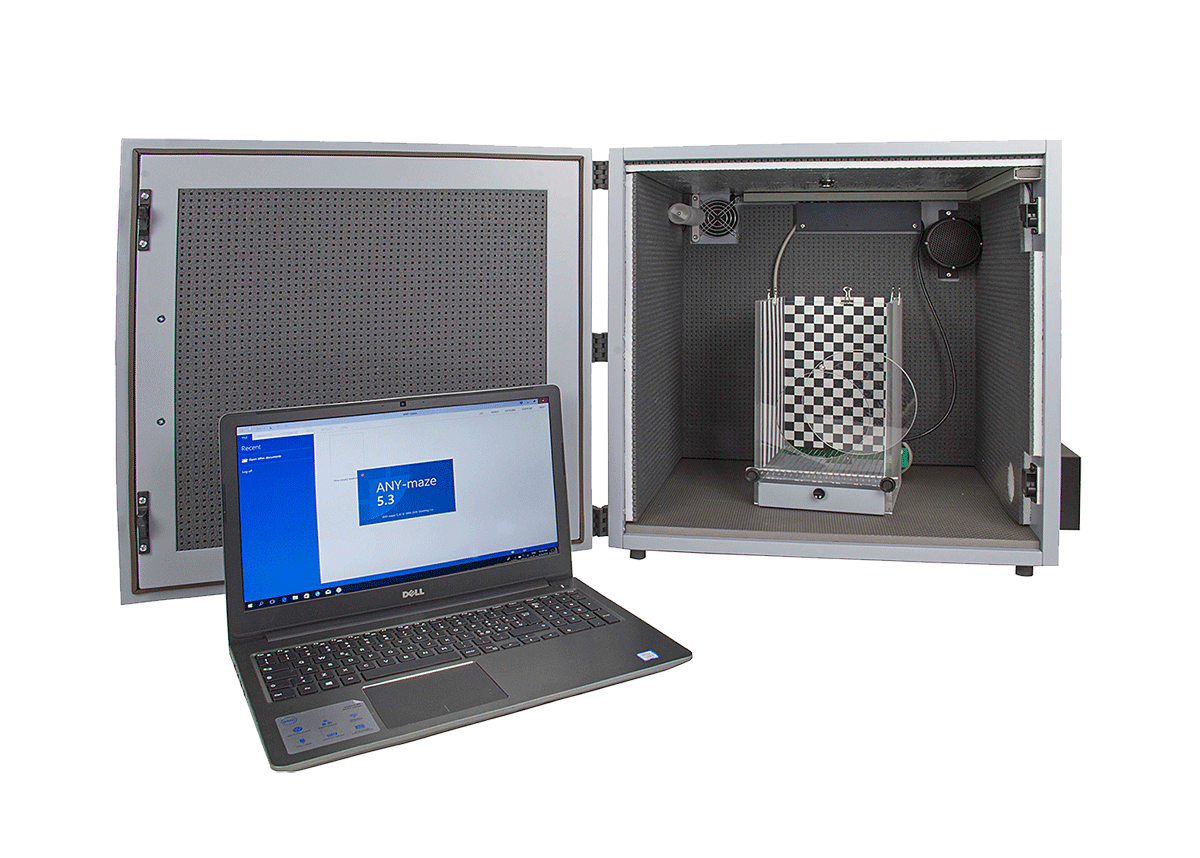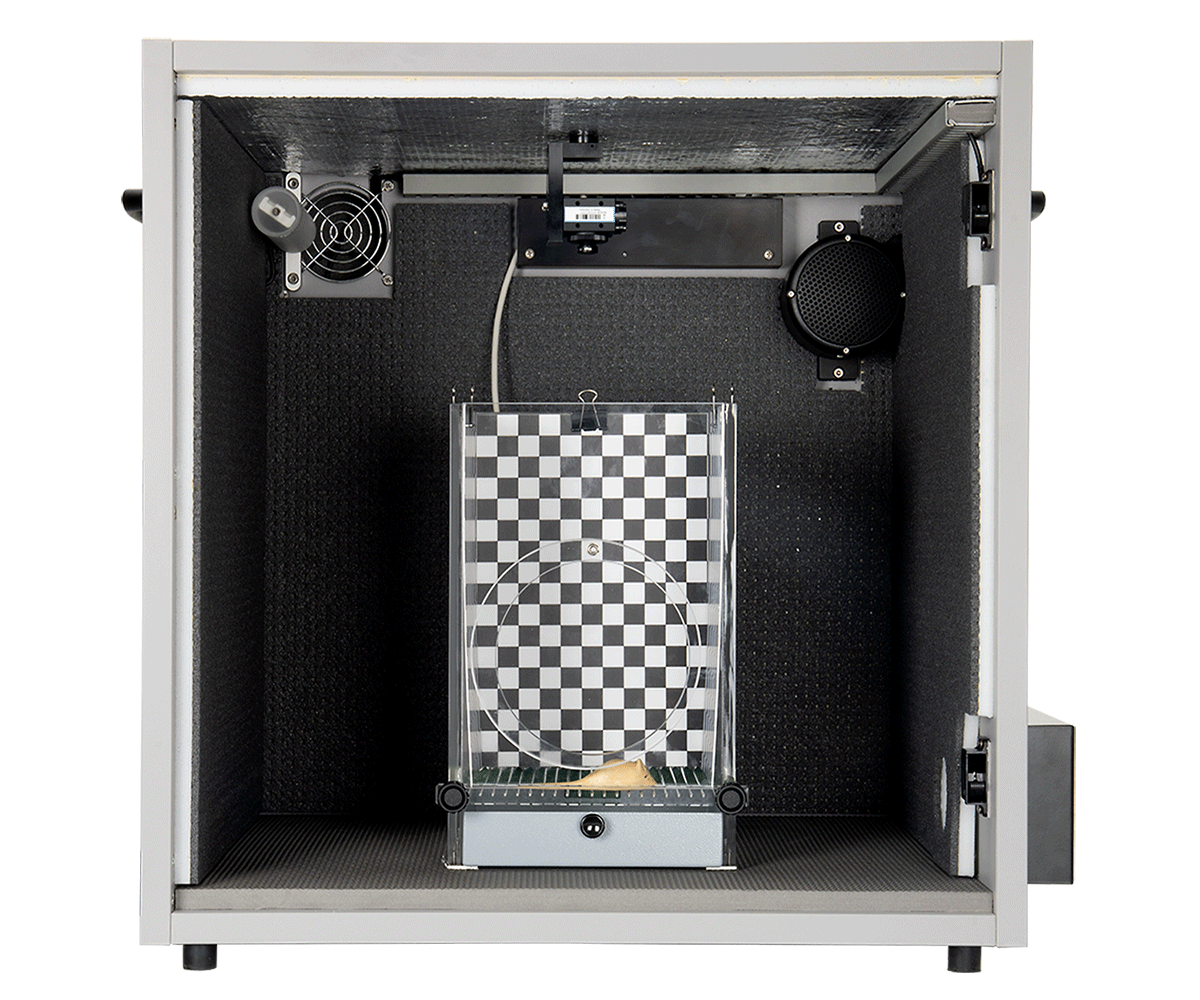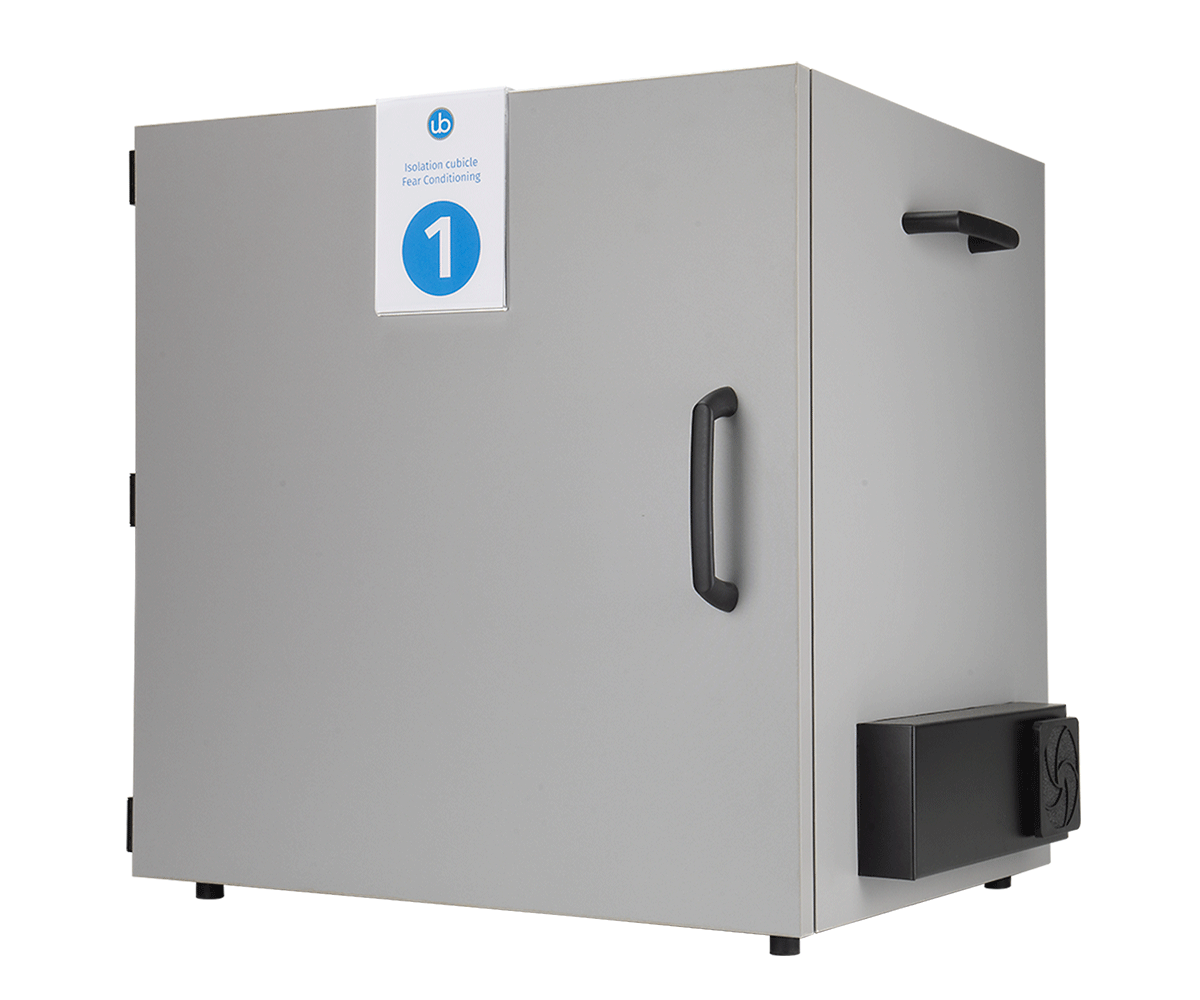產品資訊
產品資訊
條件恐懼系統 Fear Conditioning System
產品型號: 46001
廠牌名稱: Ugo basile
Ugo Basile條件恐懼系統主要用於大、小鼠環境相關條件性恐懼實驗研究。囓齒動物在恐懼時會表現出凍結狀態(Freezing),通過影像軌跡追蹤分析,軟體可自動識別這一狀態。抗憂鬱藥劑和抗中樞興奮藥劑可以明顯縮短凍結狀態持續的時間,所以常常用於焦慮、憂鬱症領域研究,也可以用於恐懼消退等的研究。
產品特點
- 使用USB紅外線攝影機,可在黑暗的環境下自動偵測動物是否有嚇呆 (需搭配Anymaze或是Ethovision軌跡追蹤軟體)
- 包含了與外界環境隔絕的箱體,其中的燈光、噪音皆可控制
- 包含了更改情境用的牆壁花紋
- 可調整強度的電刺激裝置,讓使用者針對不同實驗或物種進行微調
Ugo Basile條件恐懼系統主要用於大、小鼠環境相關條件性恐懼實驗研究。囓齒動物在恐懼時會表現得不知所措(Freezing),通過影像軌跡追蹤分析,軟體可自動識別這一狀態。抗憂鬱藥劑和抗中樞興奮藥劑可以明顯縮短凍結狀態持續的時間,所以常常用於焦慮、憂鬱症領域研究,也可以用於恐懼消退等的研究。
The UGO BASILE ANY-maze controlled Fear Conditioning System (Fear Conditioning 2.1) automates the two most common fear conditioning paradigms: Contextual Fear Conditioning and Cued fear Conditioning
The detection of freezing is automated and based on video analysis.
The Ugo Basile Fear Conditioning systems are designed to run Pavlovian conditioning experiments on mice or rats. Single-frequency sounds are delivered as neutral or conditioned stimulus (CS). Experimental procedures which contemplate the sound as CS are usually referred to as Cued Fear Conditioning. Electric current from the grid floor is delivered as the naturally aversive, or unconditioned stimulus (US).
Tests are run in an animal cage with a grid floor, whose appearance can be easily altered by attaching patterned contexts on the walls and floor. This allows for the investigation of Contextual Fear Conditioning, in which the CS is not the sound but the visual appearance of the cage (i.e. the context) itself. In this case the animal associates the electric shock to the environment where it was received.
A typical FC-System consists of:
- an FC-Unit, encompassing a Sound-Attenuating Box, with ventilating fan, a dual (visible/I.R.) light, a speaker & a USB-camera. Each FC-Unit has an individual controller on-board
- an FC-Cage, for mouse or rat, (see ordering information for available models), with electrified floor & context kit (3 floors and 3 sets of patterned walls)
- ANY-maze software (FC or full license, from version 6.0, upgrade available)
Animal Cages with Electrified Grid Floor are available in the following models:
- 46002 Rat Cage, I.D.: 26x26x30(h)cm
- 46003 Mouse Cage, I.D.: 17x17x25(h)cm
- 46004 Mouse XL Cage, I.D. 26x26x30(h)cm, with mouse floor
Optional models for tethered animals are available.
Multiple systems, with virtually no limit, are easily assembled by multiplying the number of FC-Units and FC-cages, with no additional multiplexer or interface required.
 |
ANY-maze controls the shocker, the sound generator and the light (I.R. and visible), and automatically detects the animal freezing, reporting information such as: total freezing time, number and duration of freezing episodes, latency times between stimuli and freezing. |
NEW to the 2.1 version:
- Extremely simple to set-up: just plug a USB cable into a single USB port on the FC-Unit
- ANY-maze controls all phases of the test, managing the experimental parameters, detecting the animal response and analyzing the experimental data
- An Ugo Basile Fear Conditioning mode is provided in ANY-maze protocol list to facilitate the set-up: by asking some questions about the way you want to set up the cages, the software creates lots of the protocol items for you!
產品規格
| General | |
| Shock | Constant current |
| Shock Intensity | from 0.1 to 2.9 mA, in 0.1 mA steps |
| Shock Duration | Duration: from 0.5 to 99 seconds |
| Visible Light | 0-100% |
| I.R. Light | 0-100% |
| Sound |
100Hz-18KHz, 0-100% (100%0100dB ±3dB) and white noise 0-100% (100%=77dB ±3dB) |
| Power | 80V/240Vac, 50/60 Hz |
| Operating Temperature | 10° to 40°C |
| Sound Level | Negligible (sound cue excluded) |
| Pollution Degree | ≤ 2 |
| Number of Cages | no limits |
| Physical | |
| Dimensions |
Cubicle 55(d)x60(w)x57(h)cm Mouse Cage 24(w)x20(d)x30(h)cm, ID 17x17x25(h)cm Rat Cage 33(w)x29(d)x41(h)cm, ID 25.5x25.5x36(h)cm Mouse Cage XL 33(w)x29(d)x41(h)cm, ID 25.5x25.5x36(h)cm |
| Weight | 35Kg, for each cage set |
| Shipping Weight | 40Kg, for each cage set |
| Packing Dimensions |
Wooden crate 82x71x57cm for each cage |
PC Requirements
ANY-maze will run on almost any Windows based computer: ANY-maze runs under all versions of Windows from XP to Windows 10.
If you're only planning to track a single animal then there aren't really any special requirements and almost any computer built in the last five years should work fine. However, if you want to track in multiple set-up simultaneously then you may need a more powerful machine.
| Minimum specification | Recommended specification | Power system | |
| Windows version | XP service pack 3 | Windows 10 | Windows 10 |
| Processor | Pentium Dual-core | Core i3 | Core i7 |
| RAM | 1GB | 4GB | 8GB |
| Hard drive | 1GB available | 500GB | 1TB |
| Display | 1366 x 768 24-bit colour | 1600 x 900 32-bit colour | 1920 x 1080 32-bit colour |
| USB ports | 1 available | 2 available | 4 available |
| Expansion | Not applicable | Not applicable | PCi express ports |
If you're planning to track in multiple apparatus, or track for long periods (> 12 hours), or include large numbers (> 500) of animals in experiments then we recommend you read the whitepaper Choosing a computer for ANY-maze which discusses various technical considerations that you may need to take into
應用領域
Fear Conditioning is a quick and reliable method to assess memory in rodents.
When rodents are exposed to fearful stimuli, they respond, among the others, with immobility behavior, also called “freezing”. All different Fear Conditioning procedures imply the measurement of the freezing response (i.e. the fraction of time spent immobile).
A rodent can learn to fear a previous neutral stimulus if that has been associated with an instinctively aversive one (such as an electric shock), or, in other terms, after having been conditioned.
After the conditioning has occurred, and the two stimuli have become associated, the animal is presented the neutral stimulus and, as a consequence, it will freeze. Freezing is commonly defined as complete immobility, apart from respiratory movements.
The time spent freezing is indicative of undergone memory and learning processes, which are at the basis of the association between neutral and aversive stimuli.
Fear Conditioning is a sensitive and quick test, which requires very little training (usually only one trial) to the animals. It is therefore a valuable tool for basic behavior research, as well as for high throughput and drug discovery studies. Moreover, the conditioning established during the Fear Conditioning procedure can be very strong (i.e. long-lasting), allowing for long term experiments.






